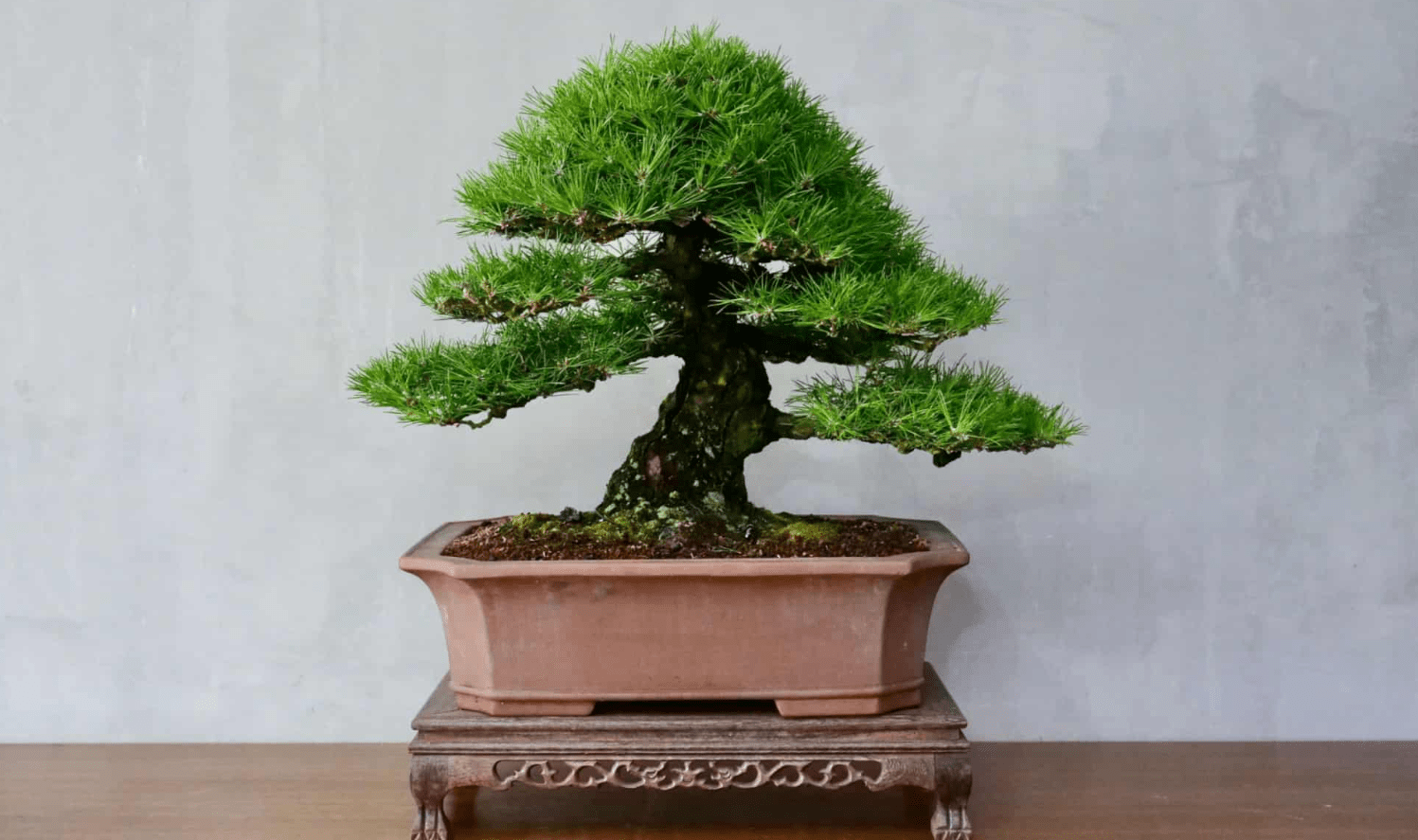Traditionally found in temple gardens, black pine trees have significant historical and cultural value in Japan. They are easily recognizable because of the black bark on their trunks, and they grow along the Japanese coast. Black pine trees are perfect for bonsai art for all these reasons. Read on to learn everything you need to know about caring for and growing a black pine bonsai.
Table of Contents
| Botanical Name | Pinus thunbergii |
| Common Types | Majestic Beauty, Oculus Draconis, Shirone Jamone, Thunderhead, Pygmaea |
| Sunlight | Full sun in cooler regions, partial shade in hot regions |
| Soil | Moist, well-draining, generally on the acidic side |
| Water | Less water than other Bonsai trees; some variations are even drought tolerant |
| For Beginners? | Yes! Japanese black pine trees are hardy and easy to take care of. Pruning them can be easy, too. |
| Indoors or Outdoors? | Outdoors |
| Pairs Well With… | Moss, rocks, and other natural ornamentation |
Common Types of Japanese Black Pine Bonsai Trees
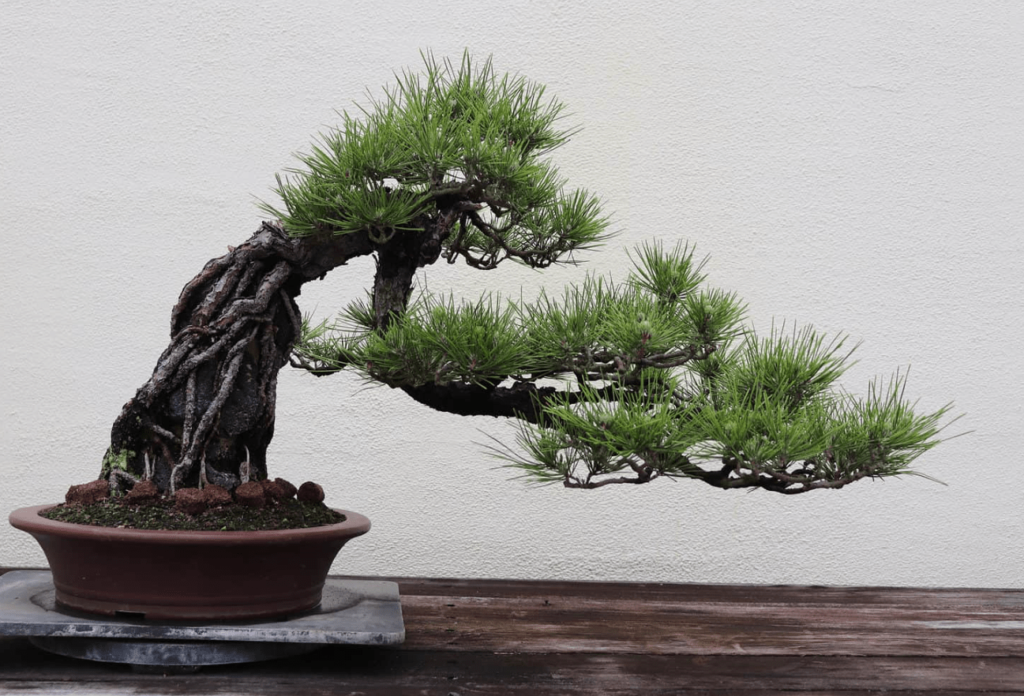
Black pine has a distinctive grey or black bark, which is why it is called a “two-flash pine,” meaning that it produces needles twice a year. If you find this tree in the early summer forests of Japan, the result will be that the tree’s needles will fall off due to heavy winds and rain. They will grow back in the fall. Black pine will not lose its needles if planted outside of these conditions. These can be dismissed as bonsai art, but they have their own benefits. But more on that later.
Black pine is often used in cold, wet climates, since it is a coastal native. But it can survive almost anywhere, as long as it’s not too hot.
Oculus Draconis
There are technically six species of black pine. The additional five pines are the original black pine varieties, the first of their kind. These varieties are usually grown as dwarf forms of the parent plant. Pure black pines can also be grown as bonsai, but the smaller varieties are more suitable for bonsai art.
Majestic Beauty
These trees, which grow on the coasts of Japan, can grow to 50 or 60 feet tall when planted in the wild. Compared to the mother plant, the Majestic Beauty Black Pine is smaller. Therefore, it is more suitable for bonsai art.
Majestic Beauty Black Pine grows best in acidic soils that drain well. Wet and with plenty of light. These trees are frost and cold resistant. And can tolerate drought.
Oculus Draconis
When grown in their natural habitat, these dwarf trees can reach a height of 6 to 8 feet, and their small size makes them ideal for bonsai art. The Latin translation of the name “Oculus Draconis” is “Eye of the Dragon.” The color of the needles of this tree is the origin of the name. Pine cones arise from the base of the needles. Hence making them yellow. Each bundle of needles is colorful, so it looks like an eye! Black pine (Oculus Draconis) grows best in moist, well-drained soil with full sun.
Shirone Jamone
The Japanese translation of “Shirone Hamoun” means “cold white eyes of a snake,” and the color of its needles is where the nickname comes from. These plants have two yellow stripes on each needle. These stripes look a lot like the eyes of a snake, especially compared to the dark green needles that remain.
Black pine (Shirone Hamoun) grows best in moist, well-drained soil with full sun.
Thunderhead
Black pine (Shirone Hamoun), also known as Nyudo pine, is more of a shrub than a tree. It has tightly packed leaves and a compact shape. These plants are perfect for bonsai art. These trees have beautiful silvery-white tipped branches. They look like candles surrounded by bright dark green needles.
Nyudo black pine does best in moist soil. They drain well. And it is very acidic and gets plenty of sun. It can also grow in neutral soil.
Pygmaea
Another small black pine, the Pygmaea variety is perfect for creating bonsai art due to its small size. If allowed to develop organically, these plants are uneven and more like a shrub than a tree. The wider the better, the thicker the better! Pygmaea black pine is famous for being a very resilient small tree. It can tolerate drought, salinity, and unfavorable soil conditions.
For proper growth Pygmaea black pine should be planted in moist, well-drained soil. And received full light
Caring for Your Japanese Black Pine Bonsai Tree
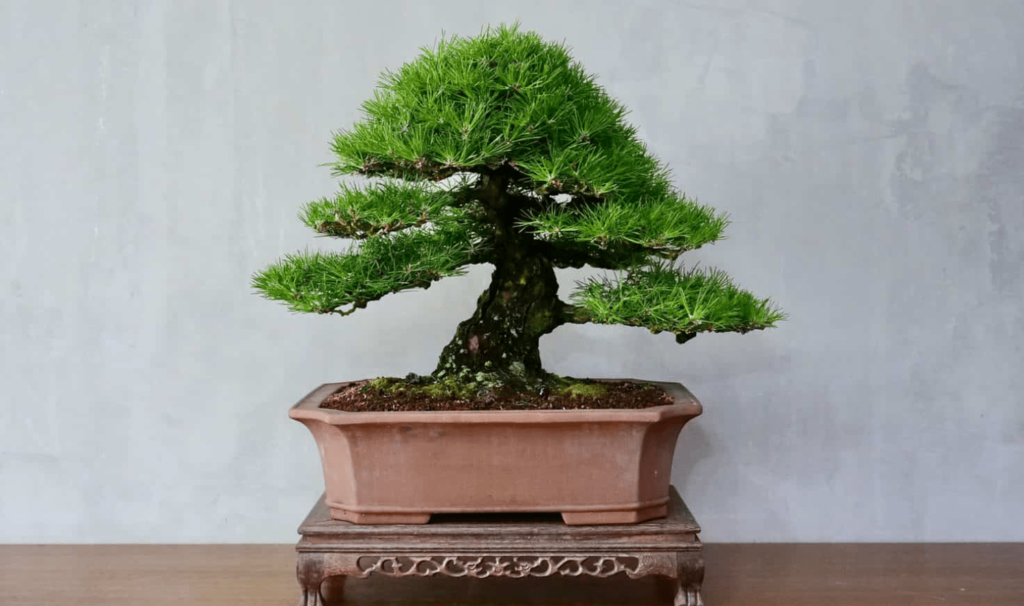
Fortunately, caring for a Japanese black pine bonsai is not that difficult. Beginners and experienced bonsai artists alike will benefit from the low maintenance potential of these species.
Here are some tips to maintain the healthy growth of your Japanese black pine bonsai.
Sunlight
All Japanese black pine bonsai require plenty of sunlight to grow. However, their long needles can get in the way of pruning. But they can also grow effectively in full sun or partial shade.
Soil Type
Black pine bonsai also needs well-drained soil. Special bonsai soil mixtures along with other bonsai are suitable for black pine bonsai. Meanwhile, other soil conditions may vary for different varieties!
Water
Make sure that the roots of your black pine bonsai tree are not completely dry. Like most other bonsai, some black pine varieties such as Pygmaea can tolerate drought. In general, pine bonsai do not need as much water compared to other bonsai.
If you decide to cut the first needles of your black pine bonsai, protect them from bad weather while they grow the second needles. If you use too much water, the second rinse needles may become very long.
Placement
Black pine bonsai can be kept outdoors for most of the year. They need special protection when the weather is too hot or too cold. If you plant your black pine bonsai in a warm place, it is recommended that you bring it into partial shade or keep it during the summer. If you bring the plant indoors, make sure it gets full sun.
Although black pine is cold hardy because it is used to cool climates, it will be somewhat weakened if planted and grown in a bonsai container. Black pine can be kept in a cool shed, garage, or greenhouse. To protect pine trees from harsh winter weather conditions, it can usually be kept in a place with enough sunlight to prevent damage from wind and frost.
Pruning Your Japanese Black Pine Bonsai Tree
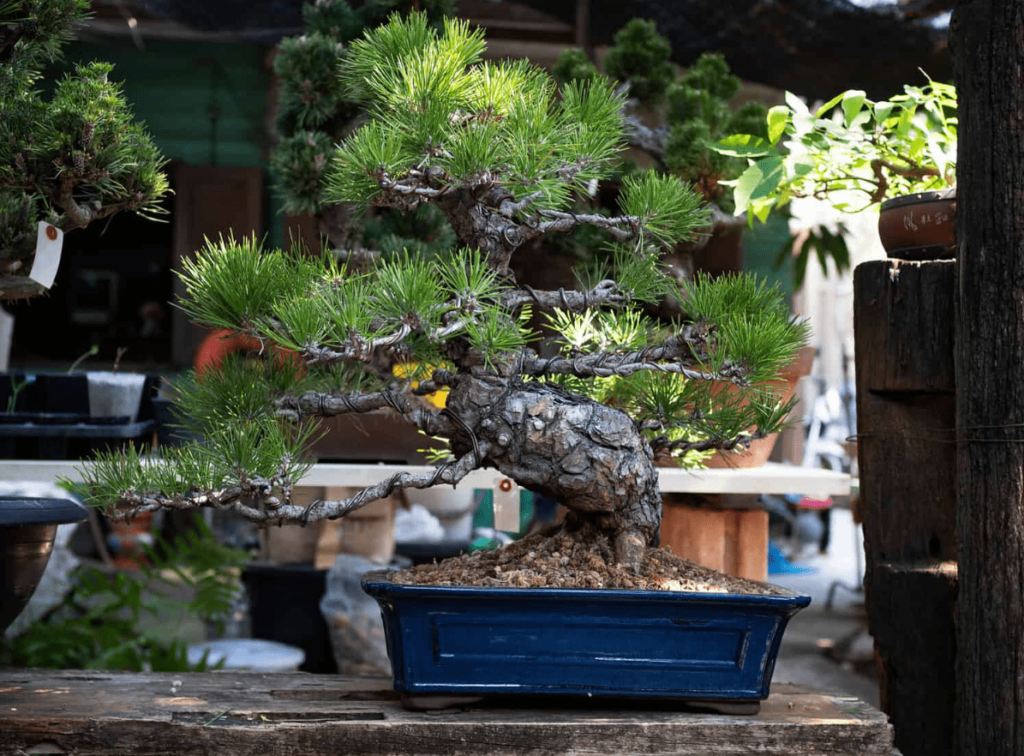
Black pine generally responds well to balancing and pruning. This is the result of the large, strong, and flexible trunk of the tree.
The first growth was removed to simulate the second growth that occurs naturally in black pine. It can be started in early summer or late spring. At that time, remove the candle from the black pine bonsai. All conifers put out upright shoots in the spring and rest at the tip of each branch. We call these candles. When removing from the black pine bonsai tree in summer, be sure to leave a sufficient stump so that the leaves can continue to grow. For best results, this stub should be about 1/4 inch long and surrounded by several needles.
You can cut off excess branches from the plant when the second part of the needles appears in the fall.
Ideal Japanese Black Pine Bonsai Tree Styles
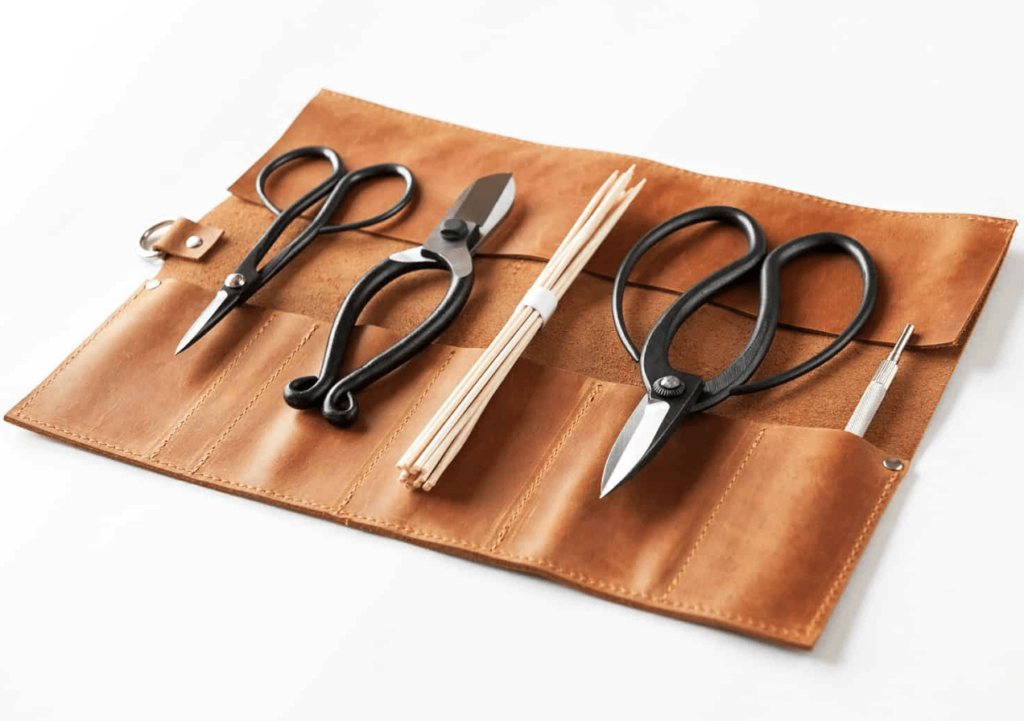
Another advantage of black pine bonsai is that it can be finished in a variety of shapes. It works equally well. Dramatic styles like the Hankengai or simple styles like the Chokkan!
The formal upright style or Hakkan. It is considered one of the easiest ways to learn bonsai. This is due to the sturdy stems and often lively dense foliage. Black pine is the best for this design. The Sokan style is similar but more difficult. Except that the bonsai tree is split in two. It is very similar to Un. There is also the Moyogi style, which is a casual upright style. Bonsai made with this technique are carved into a shape that mimics the letter S.
The Hankengai bonsai art is a difficult yet exquisite form. Once the bonsai trunk stands upright for a few centimeters, it is shaped, pruned and swept away. Black pine is perfect for this tree species because of its thick and sturdy trunk.
Propagating Your Japanese Black Pine Bonsai Tree
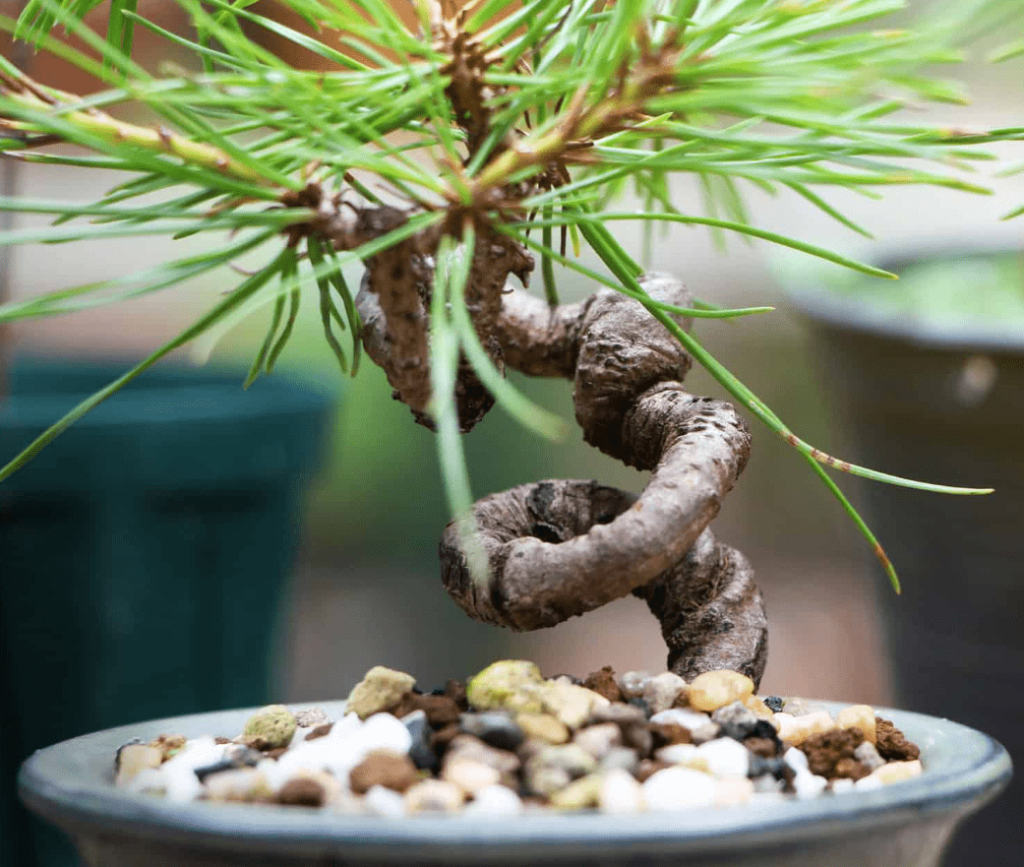
Propagating black pine bonsai from seeds is a simple process. You can also graft them!
Common Problems with Japanese Black Pine Bonsai Trees
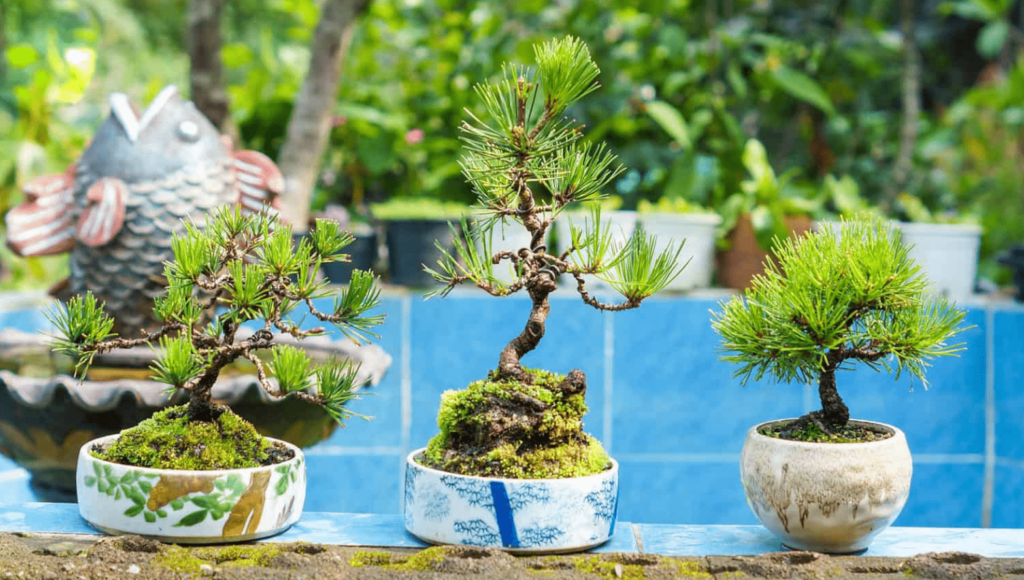
Unfortunately, black pine trees are subject to many pests and diseases. Aphids, caterpillars, and spider mites are just a few of them, but in rare cases, diseases such as root rot can occur. However, they can also harm black pine bonsai. Manufactured insecticides can be used to deal with these problems. If a disease starts to affect a pine tree, it will die quickly.
